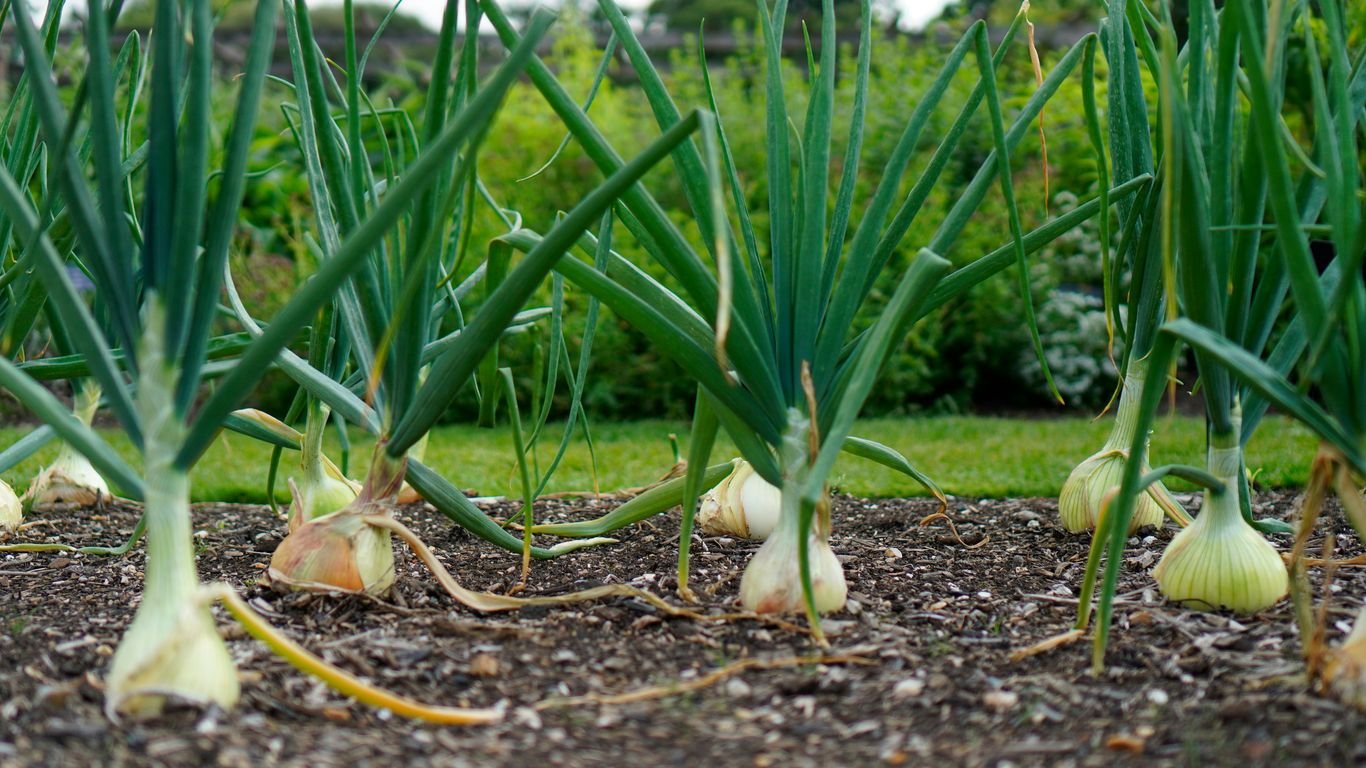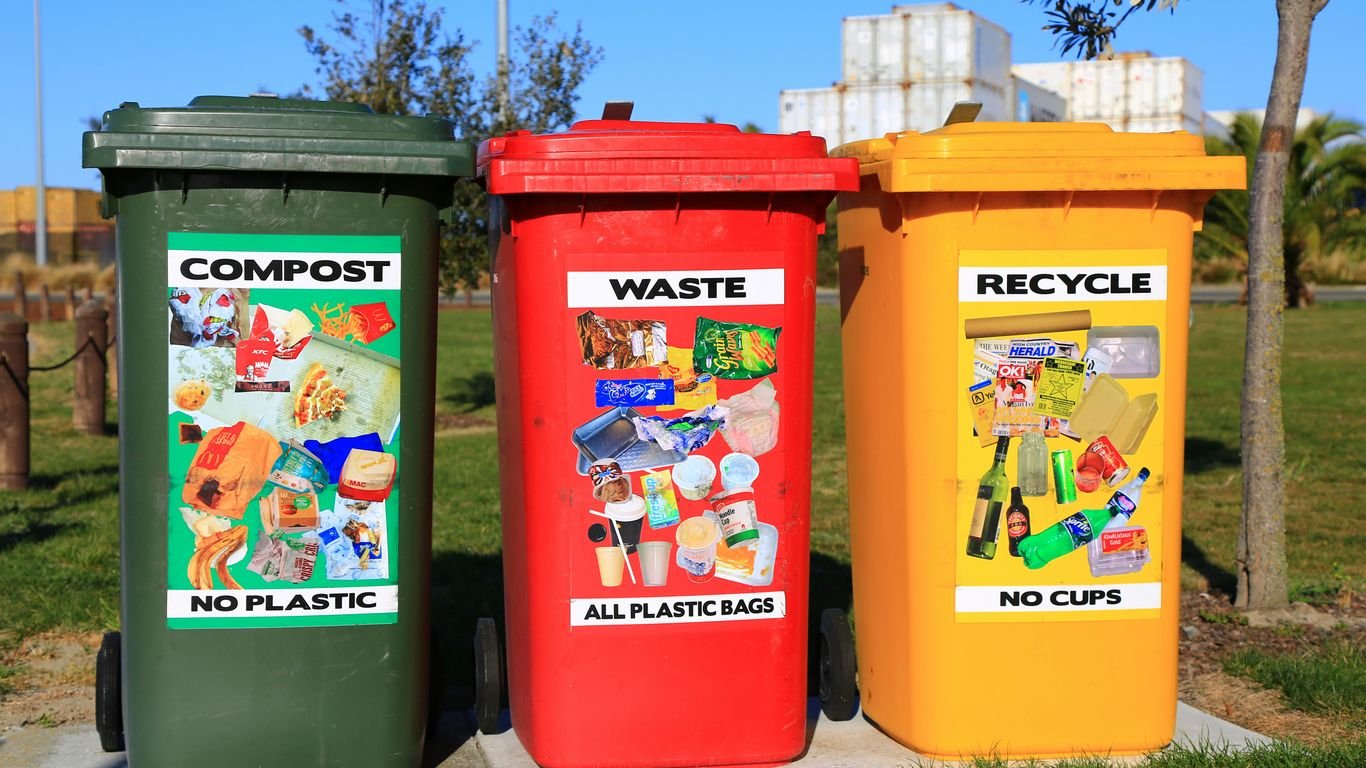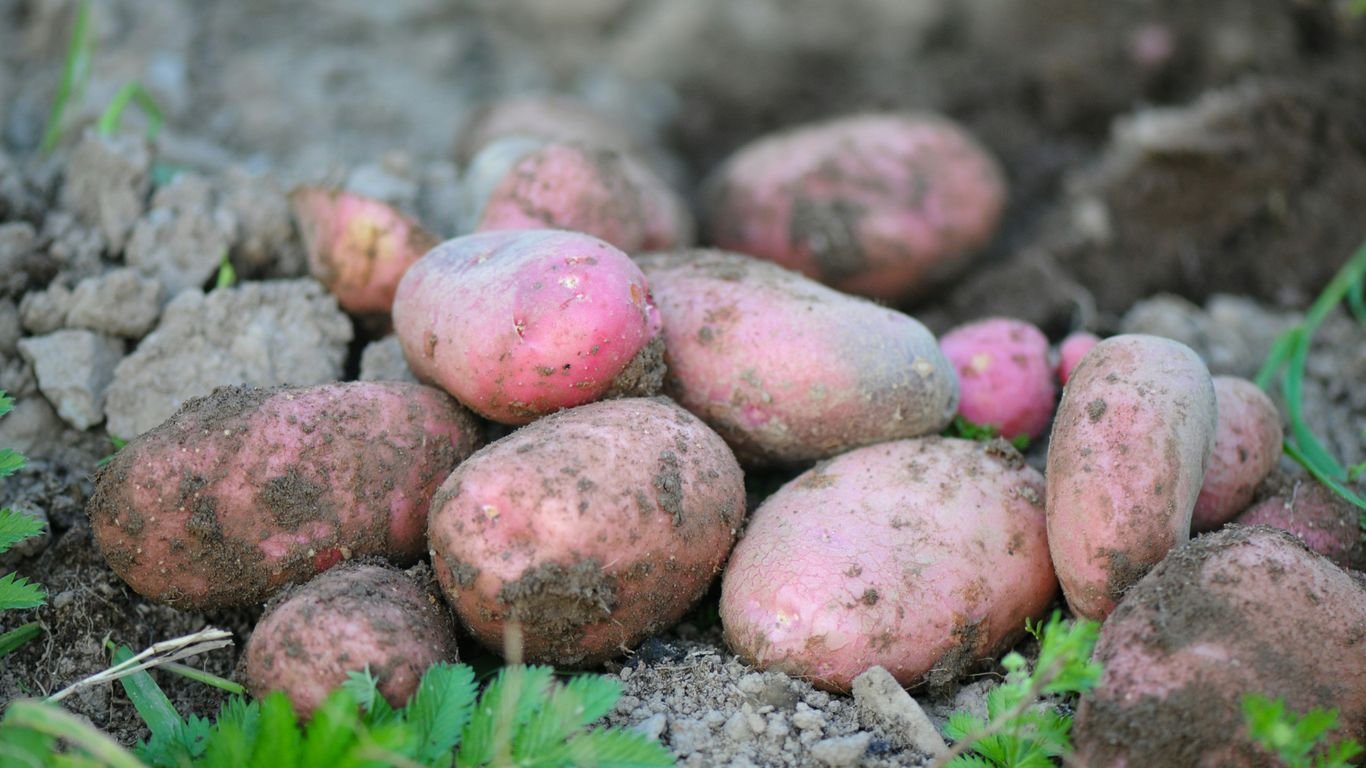Companion Planting for Onions: What Grows Well (and What to Avoid)

When we grow onions in our gardens, we want them to thrive and taste great. One trick that makes a big difference is companion planting. Basically, this means putting certain plants together so they help each other out. Onions have a bunch of good neighbors that can keep pests away, use space well, and even make the garden look nice. But there are also a few plants that just don’t get along with onions. Let’s look at what works—and what doesn’t—when it comes to onion companion plants.
Key Takeaways
- Pair onions with carrots, lettuce, beets, and spinach to save space and keep pests in check.
- Herbs like dill, chamomile, mint, and summer savory can boost onion growth and help control bugs.
- Strawberries, melons, and some berries do just fine next to onions and can even benefit from their presence.
- Avoid planting onions near beans, peas, asparagus, sage, and other alliums to prevent stunted growth and shared pests.
- Onions help the whole garden by repelling insects, using space efficiently, and sometimes even improving the flavors of nearby crops.
Best Vegetable Onion Companion Plants
Let’s talk about a few vegetables that really hit it off with onions. When we mix and match our garden beds, it helps everything grow stronger, fill up more space, and deal with fewer pests. Basically, we get a lot more from the same patch of dirt, and it’s a lot less work than spraying or fiddling with traps.
Carrots: Pest-Repelling Partners
If there’s one classic combo for onions, it’s carrots. Onions help keep carrot flies at bay, while carrots don’t fight onions for space underground. Plus, carrot roots do a great job at breaking up tough soil, helping onions stretch down deep. If you want even more details about why this partnership works so well, Carrots are excellent companions.
- Onions release a strong scent that confuses carrot pests.
- Carrots’ roots grow deeper than onion roots, so they don’t crowd each other.
- Harvest times roughly line up, making crop rotation smoother.
Lettuce: Maximizing Space with Onions
Packing lettuce around onions works like a charm, especially if you have limited garden space. Lettuce has really shallow roots compared to onions, so you can fit them in tightly. Lettuce tends to finish fast, letting onions take over the space later in the season.
- Lettuce matures before onions, freeing up space just when onions start to bulk up.
- Both like rich, moist soil and don’t mind sharing a bed.
- Growing them together helps shade the soil, keeping weeds down and moisture in.
Beets and Spinach: Root Veggie Allies
We’ve always had good luck with beet and spinach patches that border our onions. Beets like the same growing conditions as onions—well-drained, fertile soil, and decent sunlight. Spinach, on the other hand, gets a little bonus from the onion aroma since it can help keep nibbling pests (especially rabbits) at bay.
Mixing spinach and onions can mean fewer bug headaches and more harvest for us. The rows look tidy, and the pests seem a lot less interested.
Tomatoes and Peppers: Nightshade Neighbors
Onions are like silent bodyguards for nightshades. Whether it’s tomatoes or peppers, onions’ strong smell puts off aphids, beetles, and some rodents. This match helps tomatoes and peppers survive the season without half as many bites or chewed leaves.
Here’s a quick table of common onion veggie companions and their mutual benefits:
| Onion Partner | Key Benefit |
|---|---|
| Carrots | Pest reduction (carrot fly) |
| Lettuce | Efficient use of growing space |
| Beets/Spinach | Pest control and easy rotation |
| Tomatoes/Peppers | Insect and rodent deterrent |
So, next time you plant onions, think carrots, lettuce, beets, spinach, tomatoes, and peppers for neighbors. It’s one of those old garden tricks that just keeps working. Your veggies—and your dinner plate—will thank you.
Which Herbs Thrive with Onions Nearby
Growing onions isn’t just about picking the sunniest spot or watering on a schedule. If we want plumper bulbs and fewer pests, choosing the right herbs as neighbors can make a big difference. Pairing onions with certain herbs turns a regular vegetable row into a smart little ecosystem.
Dill: A Fragrant Friend
Dill just seems to make sense next to onions. Not only does it bring that feathery green look to the garden, but its scent actually boosts onion flavor—seriously, the onions just taste better. Even more, dill attracts beneficial bugs like hoverflies and parasitic wasps, which prey on pests that would normally be a headache for our onion patch. Dill can get tall and a little wild, so it’s best to plant it in a corner or along the edge.
- Attracts natural predators of onion pests
- Can enhance the flavor of onions
- Needs full sun and well-draining soil
If we notice fewer aphids or caterpillars on our onions, a patch of dill is usually the reason why. It’s one of those easy win-wins in gardening.
Chamomile: Beneficial Bug Attractor
Chamomile isn’t just for tea—it’s a smart onion companion. The tiny blooms bring in pollinators and also attract hoverflies and lacewings. Both are great because their larvae feast on aphids and thrips, common onion pests. Chamomile repels some bad bugs, too, making it double-duty support. Another subtle bonus: some people claim the presence of chamomile leads to sweeter, milder onions.
- Works well in sunny or lightly shaded spots
- Brings in helpful insects
- Adds a fresh look and scent to the onion patch
Chamomile isn’t super particular and usually doesn’t compete much for resources, so it slips right in.
Mint and Summer Savory: Pest Control Powerhouses
If we want serious pest prevention in the onion bed, mint and summer savory are both worth a try. Mint’s strong scent confuses many pests, steering them away from onions, but it can be invasive—so container growing or root barriers are a must. Summer savory, on the other hand, is easier to manage and is praised for making onions sweeter and larger. Plus, it’s a classic culinary herb.
Here’s a comparison to keep things simple:
| Herb | Benefit for Onions | Care Required |
|---|---|---|
| Mint | Repels onion pests | Needs containment, moist soil |
| Summer Savory | Boosts onion sweetness | Full sun, alkaline soil |
- Use mint in pots or buried containers to control its spread
- Summer savory is annual and quick to grow
- Both are great for creating a low-maintenance, pest-resistant area
Bringing together herbs with onions isn’t only about protection—it can help us use space better and brings some lovely smells to the garden. If we want to build an herb-focused bed, focusing on plants with similar needs can really pay off, as seen in raised setups like those described in raised bed herb garden tips.
Fruit Options to Plant Next to Onions

Planting fruit near onions is something we probably don’t think about every season, but some fruit pairings are seriously worth a try. Onions have this punchy scent that not only helps them, but can make life easier for tasty fruit crops growing nearby.
Strawberries: Sweet and Safe Together
We always look for ways to keep slugs, aphids, and hungry beetles away from our strawberries. Here’s the good news: onions really go a long way in helping keep those pests at bay. The sulfur in onions confuses or even repels bugs that might otherwise snack on your berry patch. Both strawberries and onions also like the same basic growing conditions (full sun and well-draining soil), so it’s an easy win. Our tip: just don’t plant the onions so close that their tall leaves smother the sunlight from ripening berries.
Melons: Minimizing Pest Problems
It’s so frustrating when you check your melons and see bite marks from beetles or little insects swarming — the same villains that pester onions. Teaming up these crops actually helps both. The onions’ strong smell turns away several garden pests, like cucumber beetles and aphids, and doesn’t annoy the melons at all. Here’s how we keep them both happy:
- Plant onions around the melon patch, acting as a living shield.
- Give melons plenty of space for their vines to spread.
- Water in the morning, since both crops like some time to dry out before dark.
Companion Planting with Berries
Outside of strawberries, you might wonder if onions get along with other garden berries. For the most part, we’ve found onions won’t hurt raspberries or blueberries, but the benefit isn’t quite as strong. Berries generally don’t mind onions, but you’ll still want to:
- Avoid root crowding, since onions and berry shrubs both build up strong root systems over time.
- Make sure spacing is generous, especially for bigger bushes.
- Use onions to help keep the ground clear of weeds beneath berry canes, cutting down on maintenance.
| Fruit | Good Onion Neighbor? | Benefits/Notes |
|---|---|---|
| Strawberries | Yes | Pest repellence, similar soil needs |
| Melons | Yes | Deterrence of insects, easy co-habits |
| Blueberries | Neutral | Fine, but little clear benefit |
| Raspberries | Neutral | Spacing is key, little interaction |
When we try onion+fruit combos, we’re really aiming for less spraying and weeding, plus better-looking, tastier food at the end of the season. Getting these right means our garden works smarter, not harder.
Flower Companions for a Healthy Onion Patch

Adding flowers to our onion beds isn’t just about making things look nice—it’s actually pretty useful! Certain blooms can help onions stay healthier, keep pests away, and maybe even boost the overall vibe of our patch. Let’s check out a few trusty picks and what they bring to the table.
Marigolds: Nature’s Pest Patrol
When it comes to fighting off pests, marigolds are the real MVPs. Their strong smell can make onion flies, nematodes, and aphids think twice about moving in. We usually plant marigolds along the edges or in between rows to create a sort of barrier. Besides, their orange and yellow blooms add a cheerful pop every time we walk by the garden.
- Repel common onion pests
- Attract pollinators
- Fill space in the garden without competing for nutrients
Roses: Boosting Fragrance and Growth
Most folks don’t think of putting onions and roses together, but it’s an old gardener’s trick. Onions seem to help roses by keeping away harmful bugs and might actually make rose blooms more fragrant. Planting onions in a ring around our rose bushes has worked surprisingly well—less black spot and fewer aphids bother the roses.
Sometimes, making unexpected plant combinations leads to better results and a more enjoyable garden for us.
Other Bright Blooms to Try
Besides marigolds and roses, there are a few other flowers worth planting near onions:
- Nasturtiums – Good for attracting beneficial insects and acting as a trap crop for aphids.
- Calendula – Useful for keeping aphids off onions, plus it’s a low-maintenance bloomer.
- Alyssum – Creates groundcover, prevents weeds, and draws ladybugs that snack on pests.
Here’s a quick comparison of which flower companions tackle which challenges:
| Flower | Pest Control | Attracts Beneficials | Extra Benefit |
|---|---|---|---|
| Marigolds | Nematodes, flies | Yes | Colorful border |
| Roses | Aphids (with onions) | Not typical | Boosts rose scent |
| Nasturtiums | Aphids (trap crop) | Yes | Edible flowers |
| Calendula | Aphids | Yes | Long blooming |
| Alyssum | Mild | Yes | Weed-suppressor |
Let’s be real: not every flower will get along great with onions. But trying a few of these companions in our next planting could lead to fewer pests and a much prettier garden. It’s all about experimenting and seeing what works for our own patch.
What to Steer Clear of When Planting Onions
When it comes to companion planting with onions, it’s not all friendly neighbors. Some plants really just don’t get along well with onions. We can save ourselves a lot of trouble by knowing which plants to keep separated. This isn’t about being picky — it’s about making the most of our garden space and making sure every plant has a fair shot at thriving. Let’s talk through the main offenders.
Beans and Peas: Avoid the Legume Letdown
There’s a reason every guide warns against mixing onions with beans or peas. Onions and legumes are a terrible match because onions can actually harm the helpful bacteria on bean and pea roots—the very bacteria that helps those plants fix nitrogen in the soil. Without these bacteria, beans don’t grow well and their yields drop.
- Onions may stunt legume growth
- Beans and peas may have yellow leaves, look sickly, or not flower well
- Both suffer when fighting for space and nutrients
Here’s a handy table to summarize:
| Legume Type | Effect of Nearby Onions |
|---|---|
| Bush Beans | Poor nitrogen-fixing, stunted |
| Pole Beans | Lower yield, slow growth |
| Snow/Snap Peas | Weak plants, fewer pods |
Asparagus and Sage: Unhappy Bedfellows
Asparagus and onions seem like they should get along, but in reality, it’s a mess underground. Both compete for the same nutrients, and neither one wins. Sage is another one to keep away, mostly because it likes totally different conditions — sage prefers dry, sandy soil, while onions want more consistent moisture and richer dirt. They just can’t agree on anything.
Some reminders if you’re charting out your beds:
- Asparagus and onions compete for nutrients
- Sage and onions need opposite soil moisture
- Sage might actually slow onion growth
Sometimes we learn the hard way—I’ve tried sticking sage and onions together, and ended up with sad-looking plants all around. Just easier to give them their own corners.
Other Alliums: When Too Close Is Too Much
It’s tempting to plant onions, garlic, leeks, and shallots all in one patch — after all, they’re all neat and similar, right? Problem is, they often share pests and diseases. If one plant gets hit, it’s like a buffet for every bug and fungus nearby. Keeping these allium cousins apart can slow down the spread of trouble, making it easier to spot problems and stop them early.
When it comes to onions, we want to avoid:
- Bunching them with other alliums to cut down on disease transfer
- Overloading a bed and risking issues with nutrition and moisture
- Creating a magnet for pests like onion maggots
Keeping these rivals apart can mean healthier onions and more harvest for all. Sometimes the best companion is just an empty patch of soil or a helpful crop rotation schedule!
How Onions Benefit Their Garden Neighbors
Onions are not just flavor boosters in the kitchen—they also bring some solid perks to our gardens. When we tuck onions in with other plants, we’re giving our garden buddies a much-needed edge against pests, more efficient use of space, and yes, even a bump in flavor for certain crops.
Pest-Repellent Power
One thing we all notice: the strong onion smell works wonders at confusing and repelling garden pests. We’re talking about aphids, carrot flies, and even some curious rabbits. They’ll skip right over the patch if onions are there to throw off their senses. This means less bug damage on neighboring crops like carrots, beets, and lettuce. Here are some pests onions can help repel:
- Aphids
- Carrot flies
- Japanese beetles
- Flea beetles
- Rabbits
That is a simple and natural way to protect our plants. It cuts down on our reliance on harsh chemical sprays and makes the garden a friendlier spot overall. If you’re thinking about starting onions from seeds, it’s even easier to work them into small garden spaces for a big pest control payoff (grow onions from seeds).
Improving Soil and Space Efficiency
We’re not just planting onions to chase off bugs. Thanks to their upright, narrow shape, onions take up hardly any extra space. This lets us slide them between slower-growing crops or along the edges of garden beds. Over time, this maximizes our harvest without cramming too much into one area, which could cause competition.
Some of the most popular combos that make great use of limited space include:
- Lettuce and onions (shallow versus deeper roots)
- Carrots and onions (roots at different depths)
- Beets or spinach next to onions (friendly neighbors underground)
Also, onions are not known for hogging nutrients, so they fit right in next to a lot of our favorite veggies.
Enhancing Crop Flavor and Yield
Believe it or not, having onions nearby can give a flavor boost to plants like carrots and beets. It’s subtle, but gardeners have noticed these veggies taste a bit better—and sometimes even sweeter—when grown next to onions. That’s the sort of secret sauce that keeps us coming back for homegrown produce year after year.
Here’s a quick table of crops and their garden benefits when paired with onions:
| Crop | Onion Benefit |
|---|---|
| Carrots | Fewer carrot flies, improved sweetness |
| Lettuce | Maximizes bed space, mild pest deterrence |
| Beets | Pests reduced, flavor improvement |
It’s amazing how just a few onions mixed into our beds can tip the scales toward a healthier harvest and fewer headaches throughout the season.
So, the next time we’re planning out the patch, let’s make sure onions get a spot with their neighbors. They might not get the glory, but they quietly make life easier (and tastier) for everything else we grow!
Common Mistakes with Onion Companion Plants
Even the most seasoned gardeners mess up now and then when pairing onions with other plants. We’ve all looked at a beautiful patch only to wonder why some veggies look sad next to those onions. Let’s lay out where it frequently goes sideways for us, so next season is just a bit smoother.
Planting Too Close to Competing Crops
Don’t let those onions bully your garden neighbors! Spacing is more important than it seems, especially with root crops. Planting onions too close to big feeders—like beans, peas, or asparagus—often means someone misses out on the nutrients they need. If you’ve ever pulled up tiny beets or had lettuce that bolted early, onions might be the culprit.
A quick reference table:
| Crop | Compatible with Onions? | Spacing Tips |
|---|---|---|
| Carrots | Yes | Alternate rows for airflow |
| Beans/Peas | No | Keep at least 2-3 feet away |
| Beets | Yes | 6 inches apart is plenty |
| Garlic/Leek/Shallots | No | Separate beds if possible |
Ignoring Pest Transfer Risks
It’s tempting to have an allium party—onions, garlic, leeks, scallions—all in one bed. But we’ve learned the hard way: pests don’t respect plant boundaries. If one onion gets hit with onion maggot or downy mildew, the whole patch can go down fast.
- Spread out allium family members across your garden.
- Rotate crops each season to avoid lingering diseases.
- Watch for the first signs of trouble—like leaf yellowing or odd spots.
Taking the time to split up similar crops can save your entire onion harvest from a surprise pest swarm.
Overlooking Unique Soil Needs
Onions are picky when it comes to soil. We often make the mistake of assuming all root crops want the same thing. The truth is, onions like loose, well-draining soil, while beans or peas fix nitrogen and sometimes thrive in heavier soil.
Steps we stick to now:
- Test soil before planting—if it’s too heavy, onions won’t thrive.
- Amend soil with compost for onions, but avoid too much nitrogen.
- Water deeply but let the soil dry between waterings to stop rot.
And don’t forget, as some experts remind us, planting onions near incompatible neighbors can lead to stunted growth and lower yields. Keeping a watchful eye on what’s next to our onions makes all the difference.
Common mistakes happen to all of us. The good news is, once we spot these slip-ups, it’s way easier to get better onions—and happier garden beds—for years to come.
Wrapping Up: Our Take on Onion Companion Planting
So, that’s the scoop on growing onions with friends (and a few foes). We’ve found that onions are pretty easygoing and get along with a lot of plants—carrots, lettuce, beets, and even strawberries can all be good neighbors. Just keep them away from beans, peas, and asparagus, since those combos never seem to work out. Honestly, figuring out what works best in your own garden might take a little experimenting, but that’s half the fun. We like to mix things up every season and see what thrives. If you’re new to companion planting, don’t stress—just start small and pay attention to what your onions seem to like. Before you know it, you’ll have a garden full of happy plants (and plenty of onions for all those recipes you love). Happy planting, everyone!
Frequently Asked Questions
What are the best vegetables to plant with onions?
We find that carrots, lettuce, beets, spinach, tomatoes, and peppers make great neighbors for onions. These veggies either help each other grow, use space well, or keep away bugs.
Which herbs grow well next to onions?
Dill, chamomile, mint, and summer savory are some of the best herbs to plant with onions. They can help keep harmful bugs away and even make onions taste better.
Are there any fruits that can be planted with onions?
Yes! Strawberries, melons, and some types of berries do well with onions. Onions help protect these fruits from pests, and they all like similar growing conditions.
What flowers should we plant near onions?
Marigolds and roses are great flower companions for onions. Marigolds help keep pests away, and onions can even make roses smell better. Other bright flowers can also be planted for more color and helpful insects.
What plants should we avoid putting near onions?
We should avoid planting beans, peas, asparagus, sage, and other onions or alliums too close together. These plants can compete for nutrients or attract the same pests, which can hurt their growth.
How do onions help other plants in the garden?
Onions give off a strong smell that confuses or scares away many bugs. They also use space well and can make some crops taste better. Planting onions with other crops can help us get bigger and healthier harvests.






